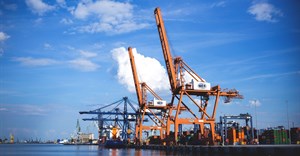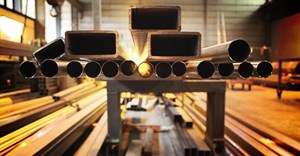Trending
Elections 2024
Jobs
- TLB Operator George
- Expediting Administrator - Engineering Sector Johannesburg
Stainless steel sector growth should be integrated in global value chain - Sassda

However, it was quick to state that it was rather in the downstream manufacturing and conversion of primary stainless steel products to finished products where the potential for significant job growth and value lies in kickstarting the country’s economic growth.
Sassda director John Tarboton says, “We salute government initiatives to grow the stainless steel industry in South Africa, however, it needs to be part of an integrated global value chain if it seeks to boost the economy in any meaningful way. Our industry is calling for beneficiation which will directly impact both jobs and the bottom line. In reality, there is no room for additional supply into the local market.”
Sassda, which heads up the stainless steel industry in South Africa focuses on promoting the sustainable growth and development of the industry, with their main emphasis on stainless steel conversion within the South African economy.
Beneficiation a key ingredient
Currently, the stainless steel industry employs 114,000 people and is worth around R40bn to the South African economy from the primary production of stainless steel through to finished products, handling 500,000 tonnes per annum (tpa) in steel sheets, plates, and coils. South Africa imports a further 40,000 tpa of which 150,000 tpa is consumed, and 390,000 tpa exported.
It is in the conversion of primary products to finished products where most jobs and value are created, with between three and five employees needed per tonne of primary product converted per year, depending on the industry. Peak consumption of stainless steel primary product in South Africa was in 2014, when 200,000 tonnes were locally consumed.
South Africa and Zimbabwe own 85% of the world’s chromite reserves (the key ingredient for stainless steel production) and 70% of the world’s chromium is used in the production of stainless steel. South Africa also has about 80% of the world’s manganese reserves which is used in some stainless steel grades. According to Tarboton, it has long been the vision that South Africa maximises its beneficiation of chromite to stainless steel to move down the value chain and create local employment, together with the call for an export tax on chromite ore to support chromium beneficiation.
Technology over cost
Process technologies for ferrochromium, nickel pig iron (NPI) and stainless steel are developing at a rapid pace around the use of backward integration into the mines to reduce energy consumption and create “4-in-1” stainless steel mills. These technologies are reducing stainless steel production costs dramatically, while competitor products such as aluminium are seeing production costs rising above inflation (including in China) due to the rise in electricity costs. It is expected that this trend of stainless steel becoming cheaper will support the current global stainless steel growth rates of around 6% in the foreseeable future with the possibility of stainless steel production migrating to the mines in support of these new technologies in backward integration.
Export-driven investment
Together with Zimbabwe’s recently signed Memorandum of Understanding for a feasibility study for a stainless steel plant, South Africa’s proposed Musina Makhada SEZ plant is set to produce stainless steel to be further processed in China; however, concerns remain regarding logistics and transport costs for its export.
According to Tarboton, “We have a globally competitive stainless steel producer in South Africa and they export about three quarters of their production. Any new stainless steel producer would have to be export driven. Currently, beneficiation would make the biggest economic impact to our industry, along with that of employment.”














